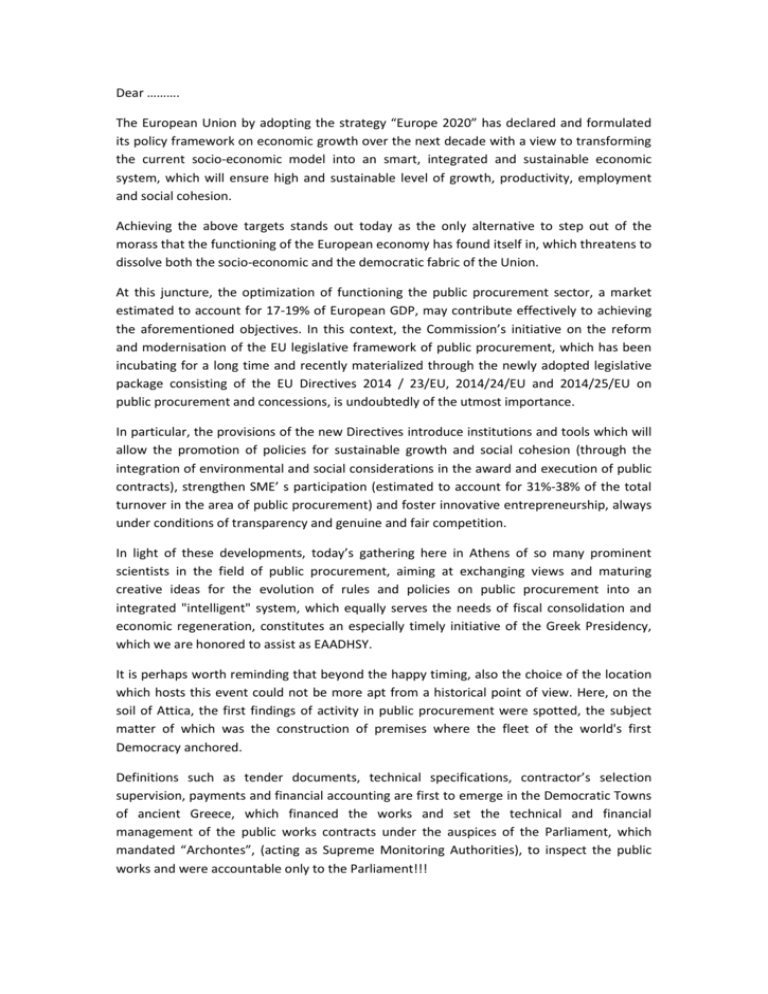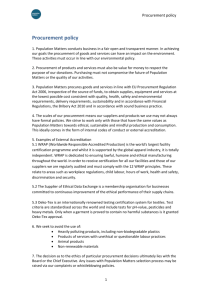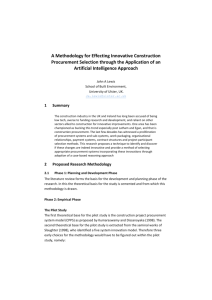Dimitrios Raikos
advertisement

Dear ………. The European Union by adopting the strategy “Europe 2020” has declared and formulated its policy framework on economic growth over the next decade with a view to transforming the current socio-economic model into an smart, integrated and sustainable economic system, which will ensure high and sustainable level of growth, productivity, employment and social cohesion. Achieving the above targets stands out today as the only alternative to step out of the morass that the functioning of the European economy has found itself in, which threatens to dissolve both the socio-economic and the democratic fabric of the Union. At this juncture, the optimization of functioning the public procurement sector, a market estimated to account for 17-19% of European GDP, may contribute effectively to achieving the aforementioned objectives. In this context, the Commission’s initiative on the reform and modernisation of the EU legislative framework of public procurement, which has been incubating for a long time and recently materialized through the newly adopted legislative package consisting of the EU Directives 2014 / 23/EU, 2014/24/EU and 2014/25/EU on public procurement and concessions, is undoubtedly of the utmost importance. In particular, the provisions of the new Directives introduce institutions and tools which will allow the promotion of policies for sustainable growth and social cohesion (through the integration of environmental and social considerations in the award and execution of public contracts), strengthen SME’ s participation (estimated to account for 31%-38% of the total turnover in the area of public procurement) and foster innovative entrepreneurship, always under conditions of transparency and genuine and fair competition. In light of these developments, today’s gathering here in Athens of so many prominent scientists in the field of public procurement, aiming at exchanging views and maturing creative ideas for the evolution of rules and policies on public procurement into an integrated "intelligent" system, which equally serves the needs of fiscal consolidation and economic regeneration, constitutes an especially timely initiative of the Greek Presidency, which we are honored to assist as EAADHSY. It is perhaps worth reminding that beyond the happy timing, also the choice of the location which hosts this event could not be more apt from a historical point of view. Here, on the soil of Attica, the first findings of activity in public procurement were spotted, the subject matter of which was the construction of premises where the fleet of the world's first Democracy anchored. Definitions such as tender documents, technical specifications, contractor’s selection supervision, payments and financial accounting are first to emerge in the Democratic Towns of ancient Greece, which financed the works and set the technical and financial management of the public works contracts under the auspices of the Parliament, which mandated “Archontes”, (acting as Supreme Monitoring Authorities), to inspect the public works and were accountable only to the Parliament!!! We receive a number of information on ancient public works out of public inscriptions carved on stone columns which are held in several museums in the Country. They contain descriptions of works, construction directions, on the materials origin and their manner by which they were processed and integrated, the names of the contracting parties, unit prices, fines on late delivery or breach of contract, as well as detailed accounts of revenues and expenses. These columns also enjoyed a level of due transparency. In particular, they were carved in marble slabs and the carving took place in public view (as other Government Gazzette or Central Electronic Registry for Pubic Procurement (CERPP), and even since nobody could forge them!!! A memorable public works contract, which had many guarantors, was the work of draining of the lake of Ptexon in Euvoia (the first work to be ever constructed as Build, Operate and Transfer), which was remunerated with a 10-year rural exploitation concession (Haerefani and the Joint Venture of the 4th century b.C). Another public work of that era, which was implemented with a relevant public contract, was the so-called “Skevothiki” (Arsenal) of Filon (Zea Port- today Pasalimani in 347 b.C.), which was destined for the storage of the equipment of the Athenians’ triremes in Piraeus. The contractor of that work was the architecture and engineer Filon. This large stone Arsenal not only served as storage for the equipment of the Athenian warships, but also for the new equipment and materials for the replacement of the old, worn parts of the ships. This awesome building was intentionally designed to be huge, so as to act as a symbol of the naval dominance of Athens and it was indeed one of the most impressive public facilities of the classical era. It is therefore the best opportunity both from timing and a historical point of view to initiate here, today, the discussion about a new era in public procurement in the European Union. With these thoughts I would like to conclude my short speech and give the floor to the moderators and rapporteurs of the event, and to wish us all an interesting and fruitful discussion. Thank you for your attention and good luck!











